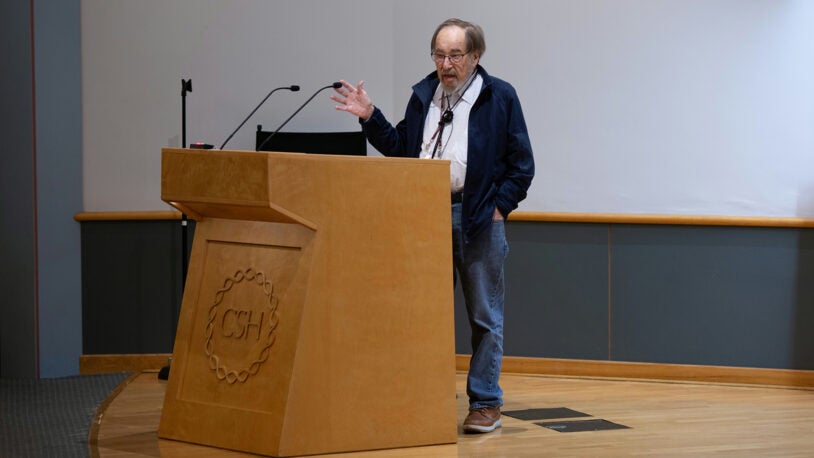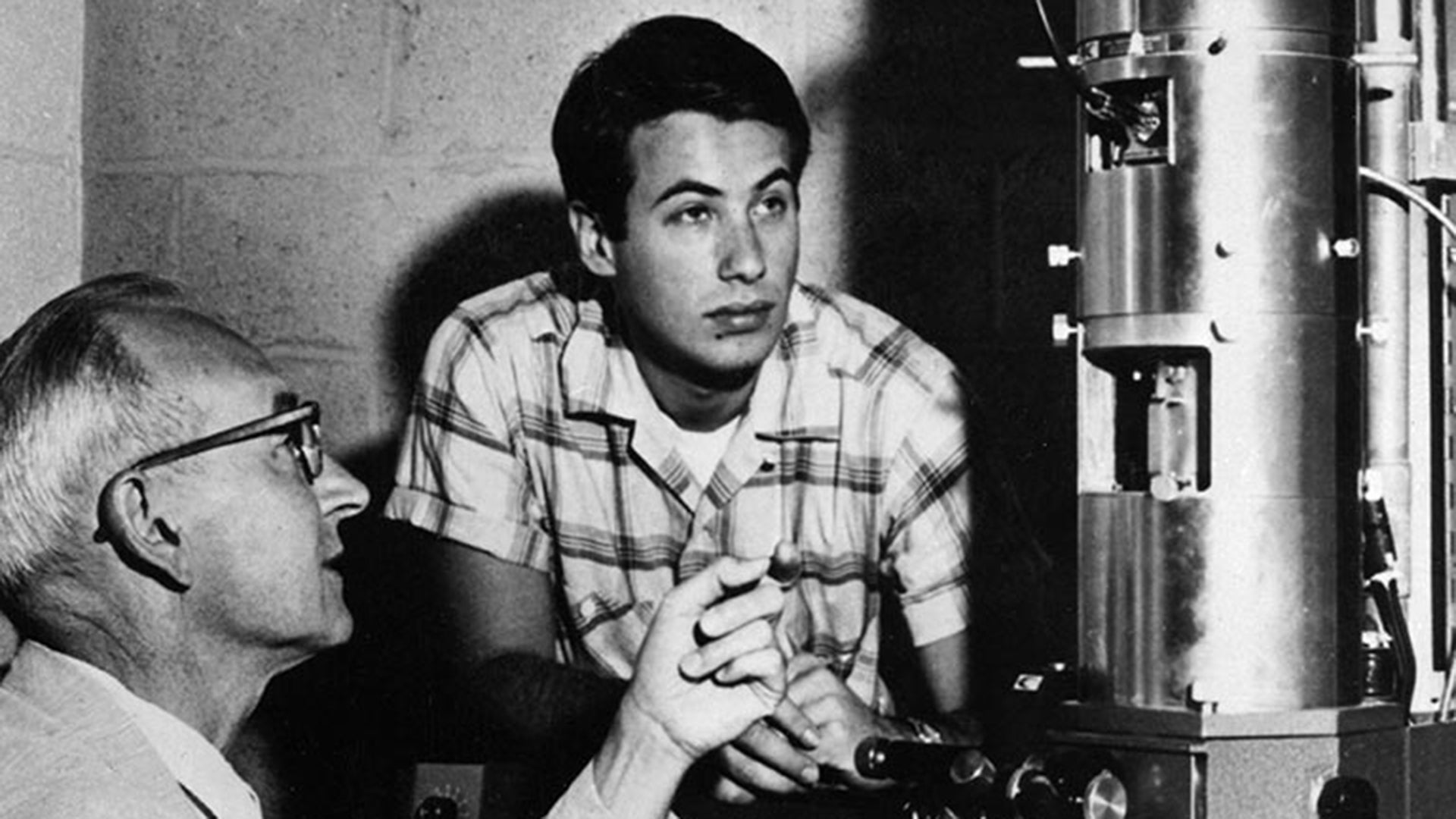Cold Spring Harbor Laboratory (CSHL) mourns the passing of Nobel laureate and revolutionary molecular biologist David Baltimore.
In 1959, Baltimore became the first member of CSHL’s newly launched Undergraduate Research Program (URP). That summer, he worked with then-Assistant CSHL Director Arthur Chovnick on a project studying the “Physiological genetics of Drosophila and Neurospora.” But it was meeting members of CSHL’s renowned Phage Group, including MIT’s Salvador Luria and Cyrus Levinthal, that would change the trajectory of his life and career.
“I went to MIT, and it was really because I had met Luria that summer,” Baltimore told Dr. Ralf Pettersson in a 2001 Nobel Prize interview. “I had the feeling that the heyday of phage research was over … that I should be looking somewhere else, and I didn’t know where, so I took what was the easiest sort of analogy. If phage had been so important for working out the molecular biology of bacteria, animal viruses should be able to do the same thing for animal cells.”
When Baltimore brought this analogy to Luria, the Nobel laureate arranged for him to attend CSHL’s course on Animal Viruses, taught by Rockefeller University’s Richard Franklin. In 1960, Baltimore would join Franklin at Rockefeller to continue his research, focusing on RNA viruses.

Ten years later, Baltimore’s work would culminate in the discovery of reverse transcriptase. This enzyme allows information to pass from RNA to DNA. The discovery upended biology’s central dogma—that the flow of information was a one-way street from DNA to RNA to proteins—and won Baltimore a share of the 1975 Nobel Prize in Physiology or Medicine. His discovery contributed to the identification of the first oncogenes and became the basis for the study of retroviruses like HIV.
Baltimore presented his work at CSHL’s 1970 Symposium on Transcription of Genetic Material and became a frequent visitor to the Laboratory over the following decades. He told the story of his discovery at the CSHL Center for Humanities’ retrospective 50 Years of Reverse Transcriptase meeting and was a featured guest at the Center’s 2024 meeting on Recombinant DNA: Fifty Years of Discovery & Debates. In May 2025, Baltimore made his final appearance at the Laboratory as a keynote speaker for CSHL’s annual Retroviruses meeting.
“David’s passion for scientific research was stimulated by his experience as a student in the URP program at Cold Spring Harbor in the summer of 1959, a program that continues to the present day,” says Jan Witkowski, a School of Biological Sciences professor and former director of CSHL’s Banbury Center. “Throughout his long career, David participated in CSHL Symposia, meetings, and Center for Humanities events, where he continued to inspire others in their own scientific pursuits.”
Written by: Nick Wurm, Communications Specialist | wurm@cshl.edu | 516-367-5940
